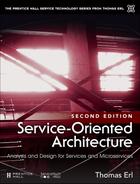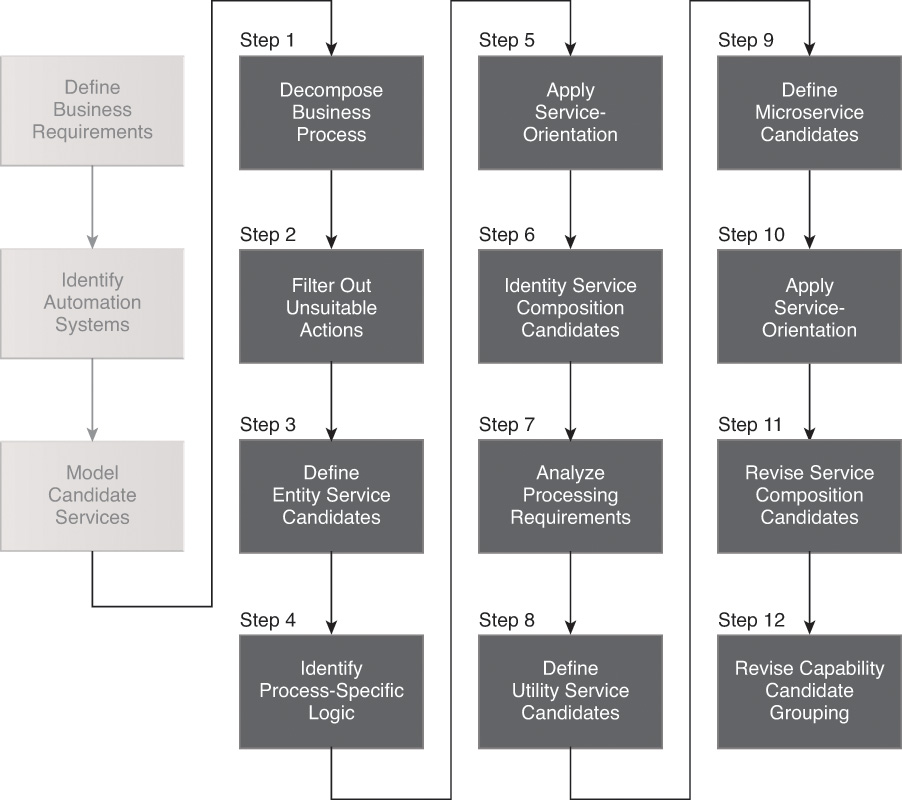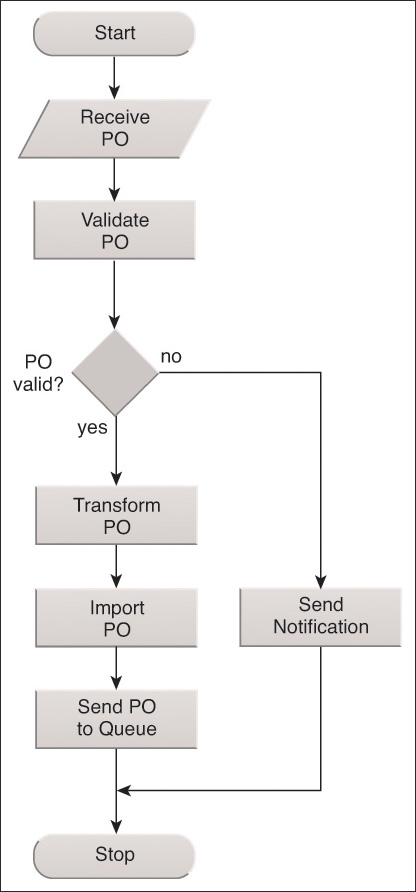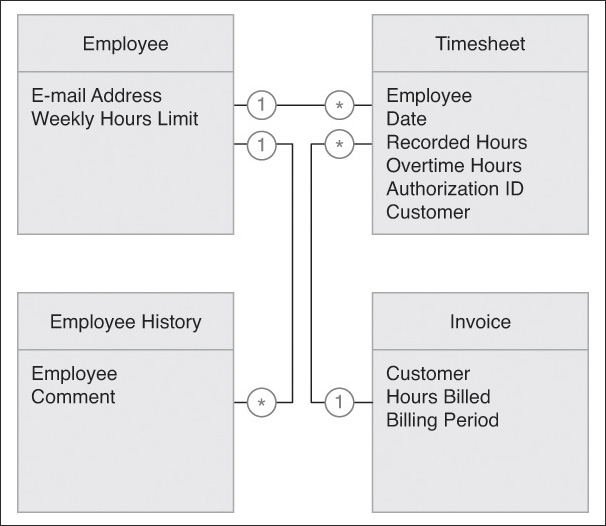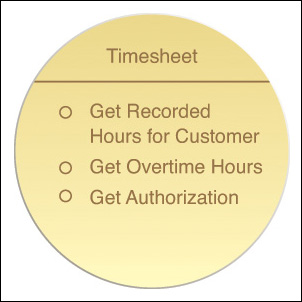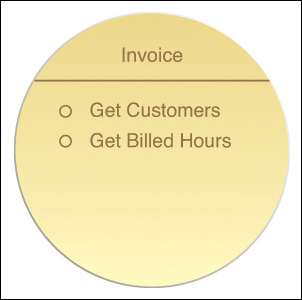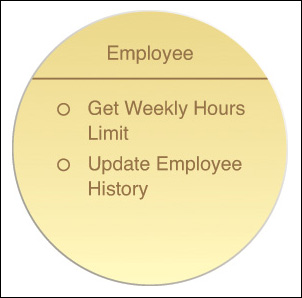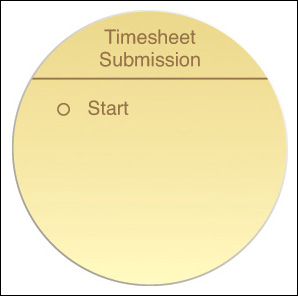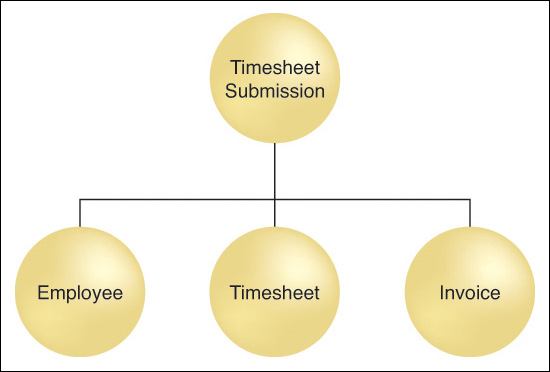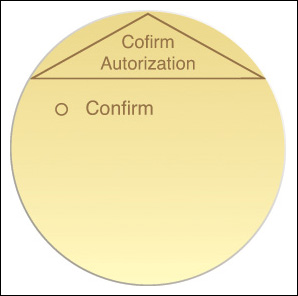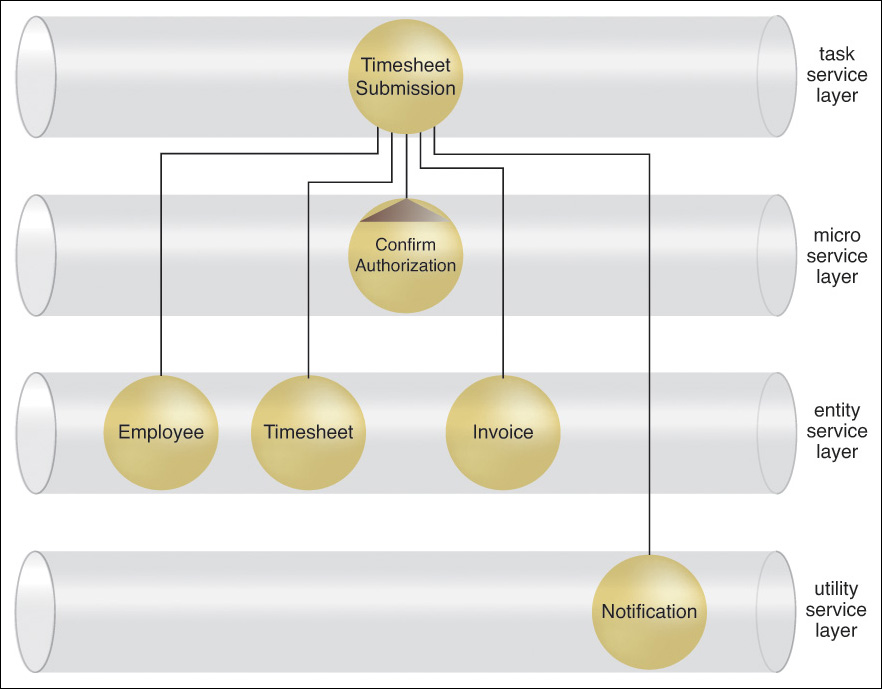Chapter 6. Analysis and Modeling with Web Services and Microservices

This chapter provides a detailed step-by-step process for modeling Web service candidates.
6.1 Web Service Modeling Process
A service modeling process can essentially be viewed as an exercise in organizing the information we gathered in Steps 1 and 2 of the parent service-oriented analysis process that was described in Chapter 4. Figure 6.1 provides a generic service modeling process suitable for Web services that can be further customized. This chapter follows this generic service modeling process by describing each step and further providing case study examples.
Step 1: Decompose the Business Process (into Granular Actions)
We begin by taking the documented business process and breaking it down into a series of granular process steps. The business process workflow logic needs to be decomposed into its most granular representation of processing steps, which may differ from the level of granularity at which the process steps were originally documented.
Step 2: Filter Out Unsuitable Actions
Some steps within a business process can be easily identified as not belonging to the potential logic that should be encapsulated by a service candidate. These can include manual process steps that cannot or should not be automated and process steps performed by existing legacy logic for which service candidate encapsulation is not an option. By filtering out these parts, we are left with the processing steps most relevant to our service modeling process.
Step 3: Define Entity Service Candidates
Review the processing steps that remain and determine one or more logical contexts with which these steps can be grouped. Each context represents a service candidate. The contexts you end up with will depend on the types of business services you have chosen to build. For example, task services will require a context specific to the process, whereas entity services will introduce the need to group processing steps according to their relation to previously defined entities. An SOA can also consist of a combination of these business service types.
It is important that you do not concern yourself with how many steps belong to each group. The primary purpose of this exercise is to establish the required set of contexts.
Equipping entity service candidates with additional capability candidates that facilitate future reuse is also encouraged. Therefore, the scope of this step can be expanded to include an analysis of additional service capability candidates not required by the current business process, but added to round out entity services with a complete set of reusable operations.
Step 4: Identify Process-Specific Logic
Any parts of the business process logic remaining after we complete Step 3 will need to be classified as non-agnostic or specific to the business process. Common types of actions that fall into this category include business rules, conditional logic, exception logic, and the sequence logic used to execute the individual business process actions.
Note that not all non-agnostic actions necessarily become service capability candidates. Many process-specific actions represent decision logic and other forms of processing that are executed within the service logic.
Note
There may be sufficient information about the identified non-agnostic logic to determine whether any part of this logic may be suitable for encapsulation by one or more microservices. In this case, microservice candidates can be defined as part of this step together with task service candidates. However, it is recommended that you wait until Step 9 to formally define the necessary microservice(s) for this solution because upcoming service modeling steps can identify additional non-agnostic logic and can further assist with the definition of solution implementation and processing requirements.
Step 5: Apply Service-Orientation
This step gives us a chance to make adjustments and apply key service-orientation principles. Depending on the insight we may have as to the specific nature of logic that will be required within a given service candidate, we may have an opportunity to further augment the scope and structure of service candidates. Principles such as Service Loose Coupling (293), Service Abstraction (294), and Service Autonomy (297) may provide suitable considerations at this stage.
Note
The application of the Service Autonomy (297) principle in particular may raise considerations that could introduce the need for some of the identified logic to be encapsulated within microservices. In this case, microservice candidates can be defined as part of this step and will be subject to further review during Step 9, when microservices are formally defined.
Step 6: Identify Service Composition Candidates
Identify a set of the most common scenarios that can take place within the boundaries of the business process. For each scenario, follow the required processing steps as they exist now.
This exercise accomplishes the following:
• Provides insight as to how appropriate the grouping of your process steps is
• Demonstrates the potential relationship between task and entity service layers
• Identifies potential service compositions
• Highlights any missing workflow logic or processing steps
Ensure that, as part of your chosen scenarios, you include failure conditions that involve exception handling logic. Note also that any service layers you establish at this point are still preliminary and still subject to revisions during the design process.
Step 7: Analyze Processing Requirements
By the end of Step 6, you will have created a business-centric view of your services layer. This view could very well include both utility and business service candidates, but the focus so far has been on representing business process logic.
This and the upcoming steps ask us to identify and dissect the underlying processing and implementation requirements of service candidates. We do this to abstract any further technology-centric service logic that may warrant the introduction of microservices or that may add to the utility service layer. To accomplish this, each processing step identified so far is required to undergo a mini-analysis.
Specifically, what we need to determine is:
• What underlying processing logic needs to be executed to process the action described by a given service capability candidate.
• Whether the required processing logic already exists or whether it needs to be newly developed.
• What resources external to the service boundary the processing logic may need to access—for example, shared databases, repositories, directories, legacy systems, etc.
• Whether any of the identified processing logic has specialized or critical performance and/or reliability requirements.
• Whether the identified processing logic has any specialized or critical implementation and/or environmental requirements.
Note that any information gathered during Step 2 of the parent service-oriented analysis process covered in Chapter 4 will be referenced at this point.
Step 8: Define Utility Service Candidates
In this step we break down each unit of agnostic processing logic into a series of granular actions. We need to be explicit about the labeling of these actions so that they reference the function they are performing. Ideally, we would not reference the business process step for which a given function is being identified.
Group these processing steps according to a pre-defined context. With utility service candidates, the primary context is a logical relationship between capability candidates. This relationship can be based on any number of factors, including:
• Association with a specific legacy system
• Association with one or more solution components
• Logical grouping according to type of function
Various other issues are factored in after service candidates are subjected to the service-oriented design process. For now, this grouping establishes a preliminary utility service layer.
Note
Modeling utility service candidates is notoriously more difficult than entity service candidates. Unlike entity services where we base functional contexts and boundaries upon already-documented enterprise business models and specifications (such as taxonomies, ontologies, entity relationships, and so on), there are usually no such models for application logic. Therefore, it is common for the functional scope and context of utility service candidates to be continually revised during iterations of the service inventory analysis cycle.
Step 9: Define Microservice Candidates
We now turn our attention to the previously identified non-agnostic processing logic to determine whether any unit of this logic may qualify for encapsulation by a separate microservice. As discussed in Chapter 4, the microservice model can introduce a highly independent and autonomous service implementation architecture that can be suitable for units of logic with particular processing demands.
Typical considerations can include:
• Increased autonomy requirements
• Specific runtime performance requirements
• Specific runtime reliability or failover requirements
• Specific service versioning and deployment requirements
It is important to note that, due to their specialized implementation needs, the use of SOAP-based Web services may not be suitable for microservices, even when they are identified as part of a Web services-centric service modeling process. SOA architects are given the option to build microservices using alternative implementation technologies, which may introduce disparate or proprietary communication protocols.
Step 10: Apply Service-Orientation
This step is a repeat of Step 7, provided here specifically for any new utility service candidates that may have emerged from the completion of Steps 8 and 9.
Step 11: Revise Service Composition Candidates
Revisit the original scenarios you identified in Step 6 and run through them again, this time incorporating the new utility service and capability candidates as well. This will result in the mapping of elaborate activities that bring expanded service compositions to life. Be sure to keep track of how business service candidates map to underlying utility service candidates during this exercise.
Step 12: Revise Capability Candidate Grouping
Performing the mapping of the activity scenarios from Step 11 will usually result in changes to the grouping and definition of service capability candidates. It may also highlight any omissions in any further required processing steps, resulting in the addition of new service capability candidates and possibly even new service candidates.
